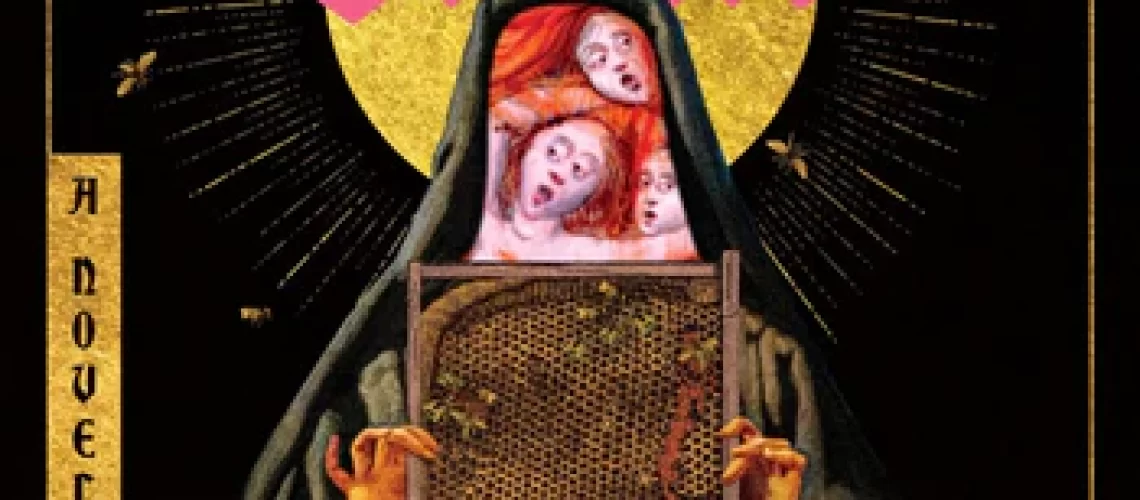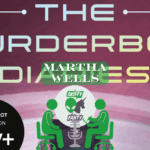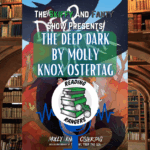“A strange book from a strange time.”
This accurate description of Caitlin Starling’s latest novel The Starving Saints encapsulates a big reason I enjoyed it so much. It’s entrancingly strange, with a dark fantasy setting of Medieval European vibes that feels a perfect accompaniment to the uncertainty and horrors of present day.
Conflict has driven the King along with his knights and subjects into Aymar Castle. After months of extended siege without any sign of aid, food rations are swiftly approaching exhaustion and the weakening people are starting to contemplate the horrible next steps that might be necessary for survival.
The King charges Phosyne, a former nun who now uses esoteric magic to search in taboo corners with the impossible task of making food appear from their lack. Known around the castle as the Madwoman, Phosyne has gained recognition from her discovery of a way to purify water, but thus far her experiments for creating food have met with failure.
To watch over Phosyne and keep her on the increasingly vital task of meeting the growing hunger, the King appoints Ser Voyne, his most trusted knight. Ser Voyne follows the King’s orders, but looks on her charge Phosyne with disgust and disdain, seeing the madwoman as a stark contrast to the Constant Lady they give worship and allegiance.
However, unknown to either of these women is Treila, fallen nobility who has survived through her sacrifice and cunning. Treila exists now as a servant who wanders the halls of the castle plotting revenge against Ser Voyne for a past violence. At the same time, Treila plumbs the depths beneath the castle for escape, finding a cavern crevice with a voice coming from it that promises passage to safety beyond, for a small price of sating its hunger.
Just as all hope seems to be gone, a miracle seemingly occurs that could avert horrors. The Constant Lady and her Starving Saints appear in the castle yard, offering food and salvation, warmly welcomed by the King. But others have suspicions about the divine appearance, a feeling that something is off and that horrors worse than those originally imagined are come. As madness descends on Aymar Castle, the paths of the three women draw together with the unknown hungers of the Saints.
The quote that I started with above comes from the author herself, beginning her acknowledgment section that follows the story. Starling doesn’t explicitly say this, but the strangeness of The Starving Saints also makes it quite unique. This has to be one of the more unique reading experiences I’ve had in recent memory, surprising me with each chapter in its plot, characters, and themes. There is a strong layer of familiarity underlying it all, particularly in its vaguely Medieval European setting and fairy story folklore inspirations. But Starling takes these basic ingredients or flavors and cooks them into something unexpected and astounding.
One example of this would be the voice from the crevice that speaks to Treila. I can’t pinpoint a specific example, but I know I have seen things like this in other fantasy in many different similar forms. It’s something immediately recognizable from lore, yet the role of it in this novel feels utterly original and, above all, very creepy.
The novel starts out slowly, building the atmosphere, introducing the world, and establishing the characteristics of the three main point-of-view characters. During these early chapters the slowly building dread and comparisons/contrasts between the three female characters help keep the reader enraptured, much as most of the residents of Aymar Castle are about to become with the arrival of the Saints. Phosyne, Voyne, and Treila all share strong traits of intelligence and resilience. But they all differ in how they see themselves as the consider past/present/future.
Phosyne looks to her past with some shame, now existing as a pariah. She has moments of pride in what she’s accomplished, but also feelings of imposter-syndrome given the accidental nature of her water purification discovery and other related achievements that she has made without really understanding how she was able. Voyne is a highly respected war hero, at the height of her power and influence. Yet she is not proud of everything she has done to attain this, is definitely not happy with having to mind Phosyne, and is becoming increasingly frustrated at being stuck in a situation where her abilities and strengths aren’t able to save them all. Finally, Treila has a past of devastation, pain, and loss, which have hardened her into purpose and self-sufficiency. Yet, she begins to discover her future might be different from what she ever expected.
The characters of The Starving Saints and their development thus is one of the real strong points of the novel, along with its inventive plot and superb atmosphere. The early dread picks up into madness and horror that give fulfillment to all that mood that came before. So often books that fall within the gothic or horror genres excel at atmosphere, but that mood stays around the same dynamic level throughout, a creepiness that never really hits fever pitch. Here, Starling shows how dynamics can pay off.
What happens to the three characters is linked to the progression of the plot as well as the themes of the novel, which one could distill down (not surprisingly) to terms like ‘hunger,’ ‘power,’ ‘faith,’ ‘salvation,’ and probably many more. To go any deeper here would be hard without spoiling the read, and honestly, I don’t know if my first read of this novel is enough for me to be committed about a lot of what I think about what this novel has to say (in general or even to me specifically). The Starving Saints is a novel I want to continue thinking about, and it’s one I’ll want to go back and reread again after a time.







